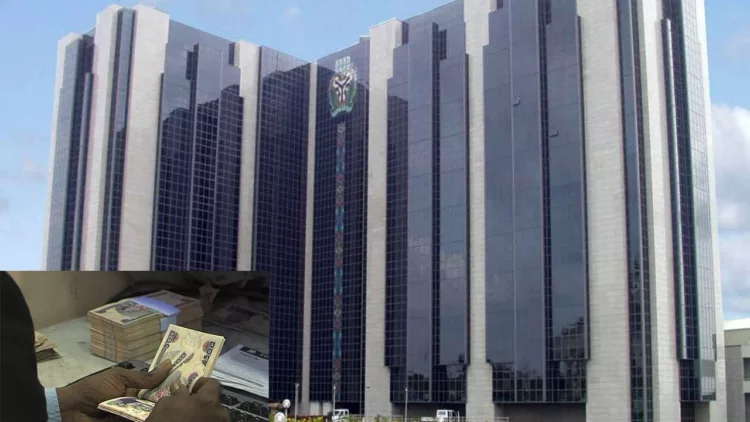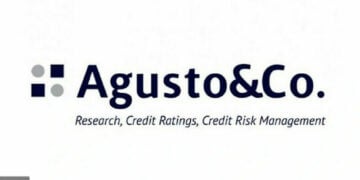Ahead of the March 31, 2026, deadline for banks to shore up their capital base as stipulated by the Central Bank of Nigeria, banks have raised a total of N2.5 trillion, mostly from local investors.
This is as the total assets in the industry are projected to reach N242.3 trillion by the end of this year.
This was revealed in the Agusto & Co. 2025 Nigerian Banking Industry Report, released on Tuesday.
According to the report, 16 banks raised N1.7 trillion last year to meet the CBN’s new capital requirement.
CBN Governor Olayemi Cardoso announced a new capital base for the banking industry last year, setting N500 billion as the minimum capital for international licences. Those with national and regional licences are to shore up their capital to N200 billion and N50 billion, respectively.
Merchant banks’ capital was also set at N50 billion, while non-interest banks with national and regional authorisations are N20 billion and N10 billion, respectively.
In its latest report, Agusto & Co noted that about N800 billion was also raised in the first seven months of this year, bringing the total amount raised to N2.5 trillion.
The CBN governor announced at the last Monetary Policy Committee (MPC) meeting that eight banks had met the required capital ahead of the deadline.
Noting that the mandatory verifications by the CBN and the Securities and Exchange Commission (SEC) are pending on some of the capital raised, Agusto & Co., in the report, said it expects the injection of an additional N900 billion as more banks race to beat the deadline, which is just seven months away.
According to the report, most of the capital raised by the banks in the last 19 months had been provided mainly by domestic investors, reflecting Nigerians’ acceptance of the Industry.
The report notes that the Nigerian banking industry has successfully navigated various challenges and maintained an upward growth trajectory. Total assets and contingents are projected to reach N242.3 trillion by 31 December 2025 after expanding by 44.9 per cent year-on-year to N186.6 trillion as of 31 December 2024.
“Notwithstanding the funding pressure from the prevailing high-interest rate environment and the contractionary stance of the monetary authority, the Industry remained liquid with a 59.4 per cent liquidity ratio. We believe the liquidity ratio will exceed 60 per cent by FYE 2025, supported by favourable, albeit declining, yields on treasury securities.
“In our view, banks will accelerate the adoption of innovative funding strategies, as reflected in the uptick in commercial paper issuances, to moderate the impact of the funding pressures. In the first seven months of 2025, commercial papers amounting to circa N750 billion were issued by various players. We anticipate more issuances, particularly as the prevailing yields gradually moderate in the latter part of the year.”
The report also said that banks’ credit exposures are expected to comply with the prescribed single obligor limit (SOL).
As of 31 December 2024, 5.2 per cent of the Industry loan book was adjudged as non-performing, higher than four per cent recorded in the prior year, based on the deterioration of some credit facilities and the bloating impact of the 40.4 per cent naira depreciation during the year.
“In our view, the ongoing capital raising activities will resolve most SOL breaches on some exposures hitherto under forbearance. We also anticipate a surge in write-offs as some banks leverage the transition relief (waiver on the twelve-month mandatory waiting period for duly provisioned impaired loans before write-offs) to address non-performing forbearance loans.
“Notwithstanding, we believe the Industry’s impaired loan ratio will surge to 6.9per cent as some non-performing forbearance loans are classified appropriately. However, we expect a reduction in the impaired loan ratio before 31 December 2026 as the non-performing loans are resolved.
The report stated that profitability indicators are expected to decline for the full year 2025 as “the need for the appropriate provision level on the hitherto forbearance loans will drive a surge in the impairment charge.
“The decision of some banks to accelerate the provision coverage and write off some impaired loans as part of the transitional reliefs will also contribute to higher impairment charges. In addition, we anticipate lower foreign currency revaluation gains that have bolstered profitability since FY 2023. Overall, we expect a 19.2 per cent decline in profit before taxation, with the pre-tax return on average equity plummeting to 27.3 per cent (FY 2024: 48.2 per cent) in FY 2025.
“However, the Industry’s profitability is expected to rebound in FY 2026 as the proceeds of the capital raising activities are fully deployed and the impact of the uptick in the impairment charge is moderated.”











